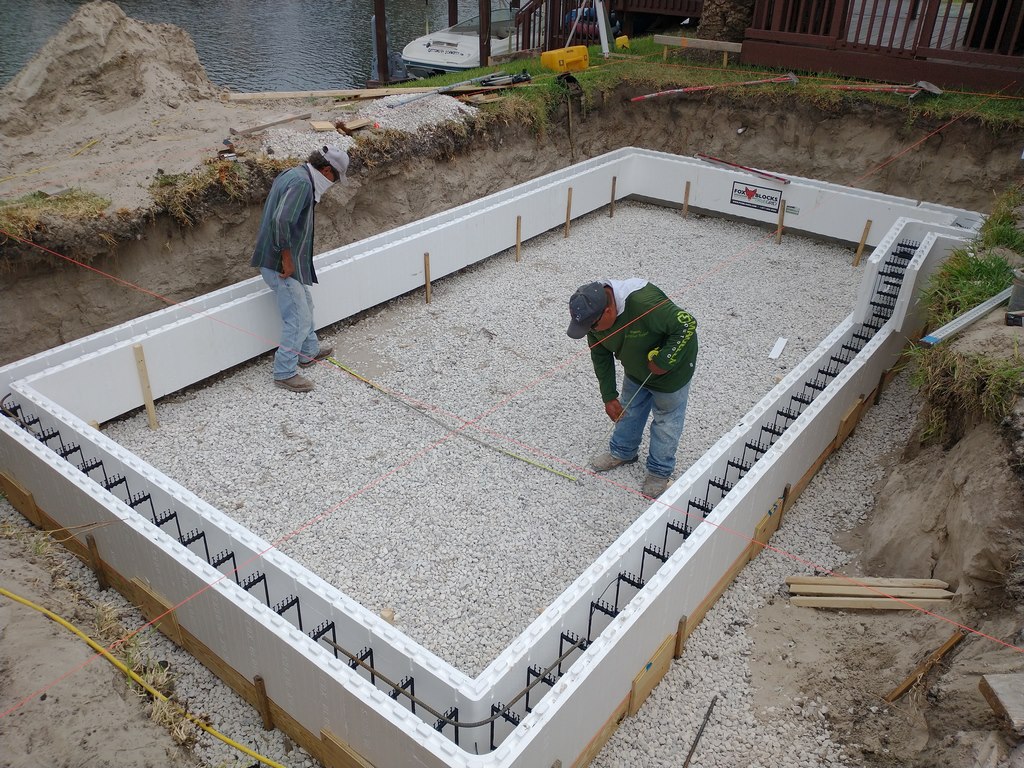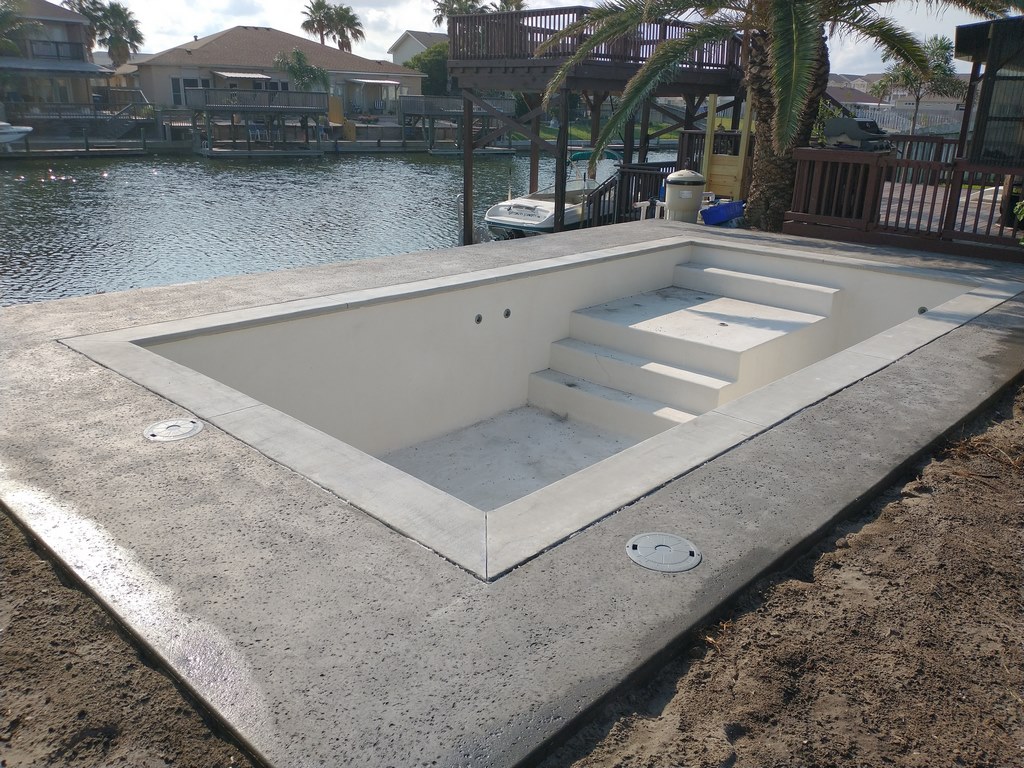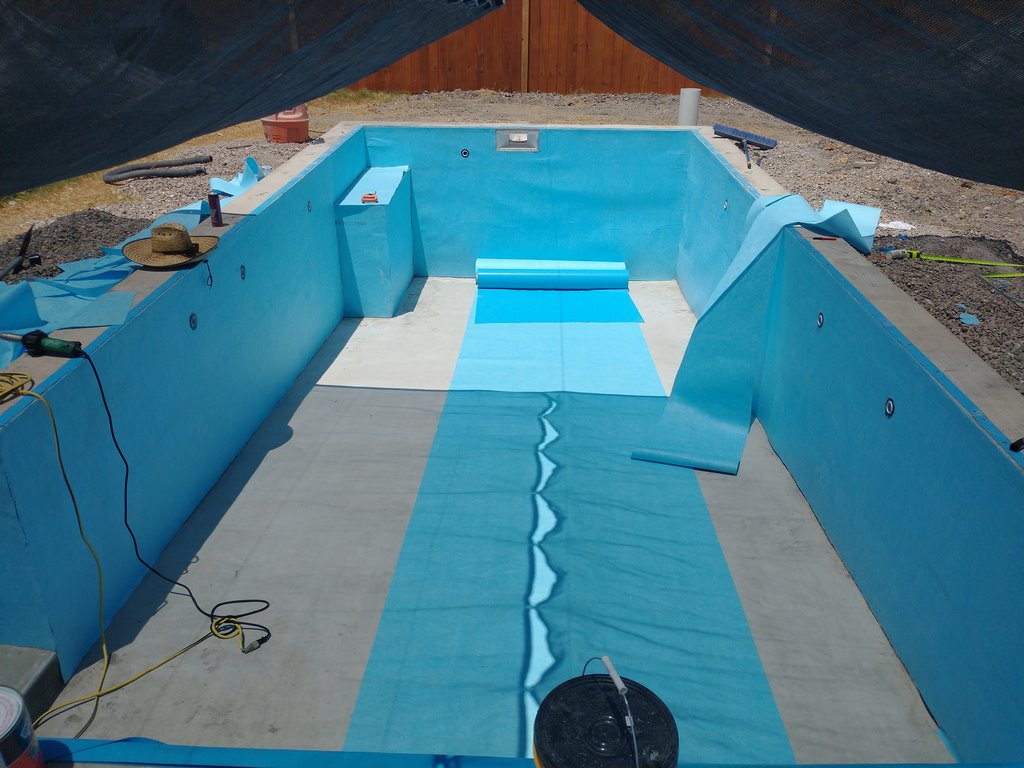Insulated Concrete Forms & PVC membranes (a perfect marriage?)
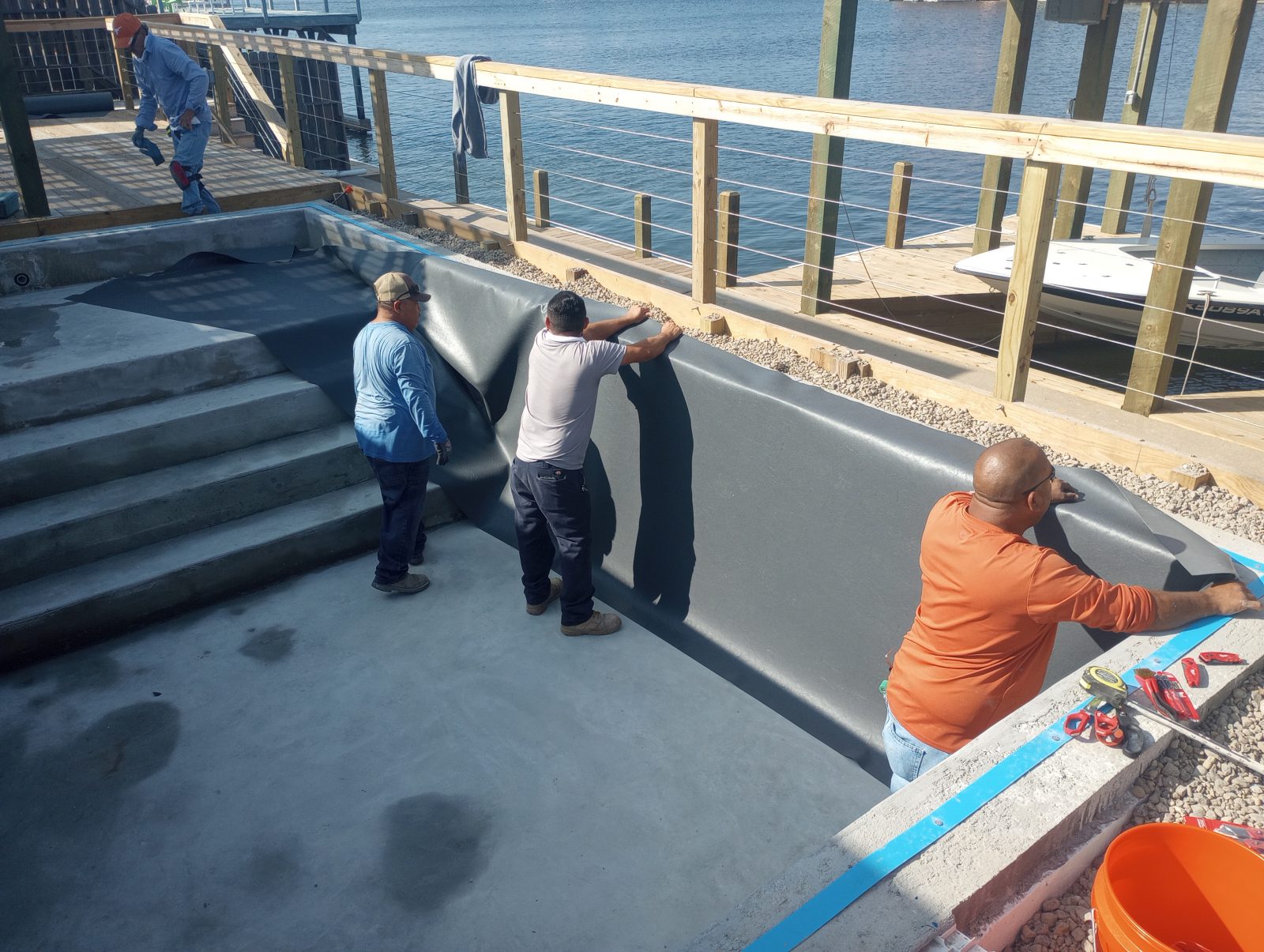
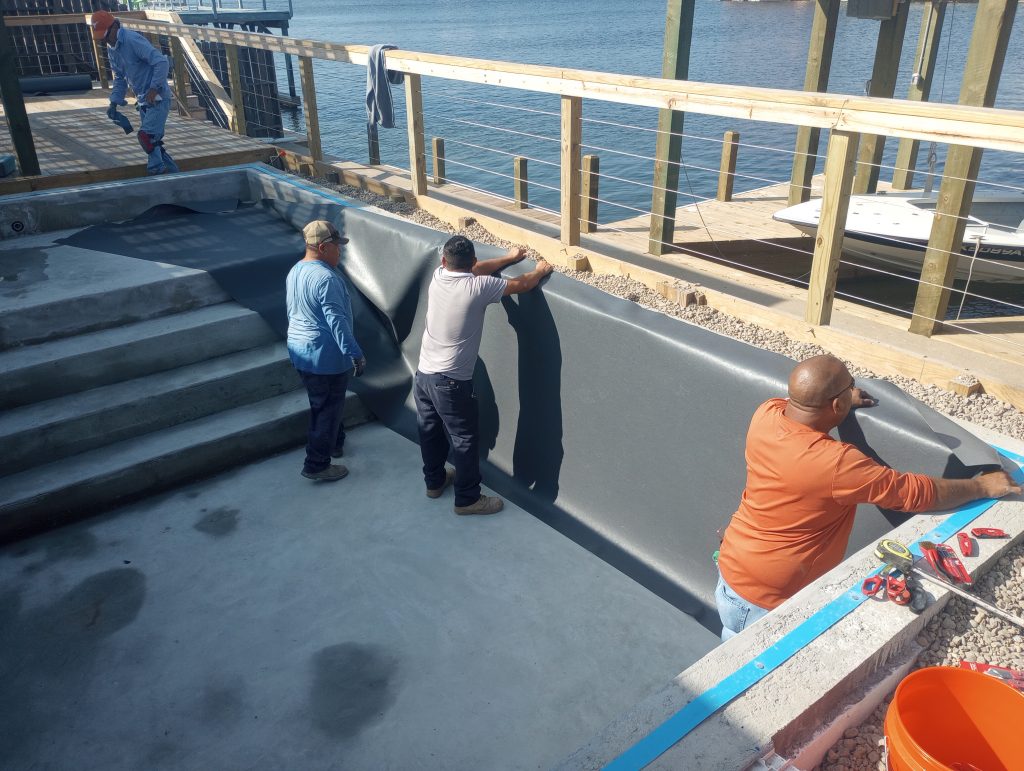
When it comes to favored pool construction techniques, some builders are exploring new options to meet the needs of the market and their own internal operations. Here’s a perfect example of an enterprising watershaper exploring an innovative combination of construction systems.
By Mark Teinert
Sometimes it pays to adapt, especially when faced with a frenzied and volatile marketplace. As we were looking to increase efficiency and performance in the construction process, we turned to insulated concrete forms (ICFs) with a polyvinyl chloride (PVC membrane for interior surfaces).
Making this kind of switch requires an open mind and an innovative spirit. In our case at Pools by DC Design in Corpus Christi, TX, challenging convention has worked to our advantage.
The main idea was to create a solid concrete pool wall structure with a durable and attractive waterproofing solution that is welded on-site. Here’s what we found:
Because these construction materials (foam forms and PVC membranes) can be stocked and readily available, we are able to construct pools of any size quickly, easily, and most important, creating a reliable concrete structure and waterproofing membrane.
THE ICF CONCEPT
ICF systems have a long history of application in residential construction, particularly for home foundations.
It’s an elegantly simple concept: ICFs are hollow blocks composed of expanded polystyrene foam and plastic bridges, or webbing, which serves to connect the block sides. The method relies on the interlocking expanded polystyrene (EPS) foam in block form to establish a framework for reinforced concrete walls.
ICFs are systematically stacked atop each other and reinforced with steel rebar. Concrete is poured into the forms, generating a robust and enduring pool structure. Following the concrete curing, the forms stay in place, becoming a permanent part of the pool structure, delivering superior insulation properties.
The formwork includes internal webs that provide a continuous barrier to eliminate thermal bridging and air leaks. ICFs come in various sizes and shapes and can be easily cut and customized on-site to create virtually any pool design.
NECESSITY BREEDS INVENTION
The growing popularity of ICF pool construction can be attributed, in part at least, to the pandemic’s affect on the pool construction industry, both in terms of demand and supply-chain shortages.
During the pandemic, numerous builders started investigating new construction options due to supply chain disruptions, which made building pools very challenging, especially as demand skyrocketed. Looking for alternative construction options, pool builders have sought systems that were readily available in inventory.
The approach mitigates the challenges posed by construction scheduling uncertainties, precisely because the ICF blocks are readily available. Builders order and have the blocks in two days in most cases—delivered directly to the jobsite.
It worked like a charm and now builders like us are promoting the insulating properties of the ICF product as it helps the water stay warmer longer than traditional pool construction. This can be a huge benefit in colder climates where the swimming season is short as temperatures drop quickly.
In effect IFC create an insulated pool structure – insulating the pool’s interior from the colder soil surrounding the pool structure.
Some manufacturers report the system can yield energy savings of up to 60% with respect to water-heating costs. This advantage is further bolstered by the system’s expedited construction timeline. Because the ICF system is made with six inches of concrete, it is significantly stronger than some other pool building techniques.
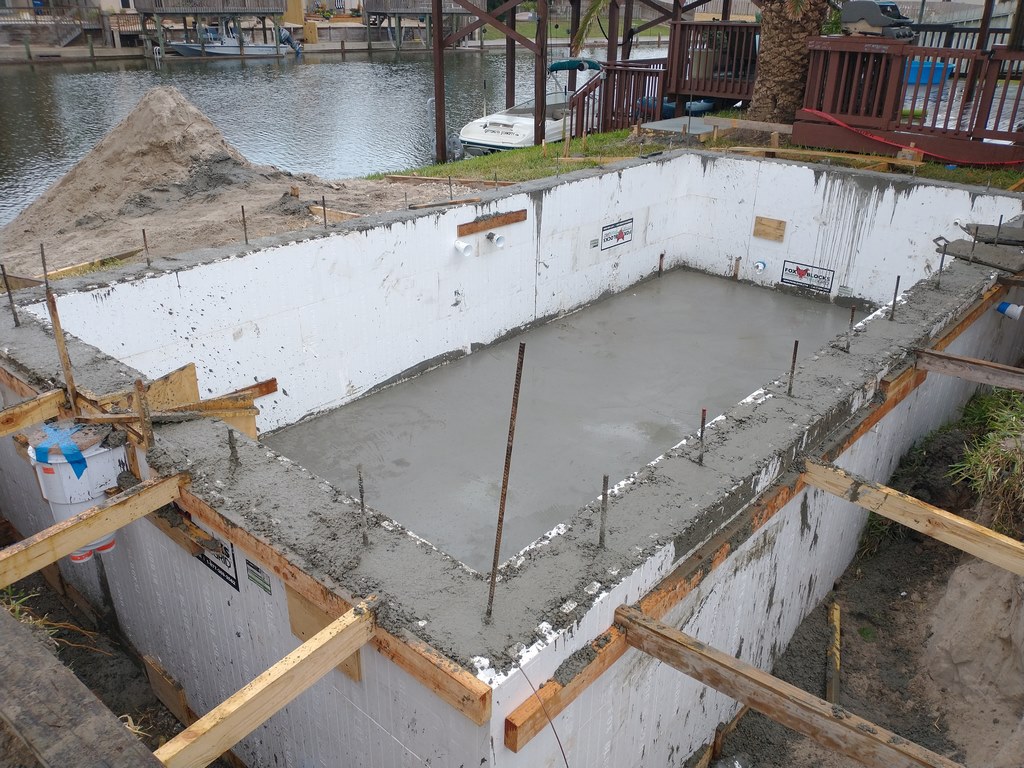
Our company started working with concrete doing decorative pool decks and backyards 15 years ago, but more recently started building pools.
We have clay soil that shifts and moves and lots of water table issues, so we proactively chose the type of pool construction that could withstand those issues. We started with fiberglass pools but also built a few ICF pools in to offer custom features, largely because fiberglass didn’t allow for customization.
Then, when COVID hit, we couldn’t get fiberglass pools, so we quickly shifted to building more ICF pools. We certainly valued the fact that fiberglass pools are easy to maintain, so we started looking for an interior waterproofing solution that offered the same ease of maintenance for our ICF pools.
We started with a plaster interior when first building the ICF pool; but continued looking for a less maintenance-intensive solution that was closer to the fiberglass experience. We tried traditional vinyl liners, only to discover the fabricated bag-style liner did not lend itself to the sharp corners of an ICF pool.
SMART PAIRING
That was when we turned to reinforced PVC membranes. We first learned they’ve been used in Europe for decades. Once we did our own research and completed the training with manufacturer, RENOLIT, we knew this was the perfect waterproofing interior product to pair with ICF pool construction.
Apart from the simplified maintenance advantages for pool owners, builders like us are appreciative of the immediate accessibility of PVC membrane rolls, which can be procured without delay. The longevity of the 60-, 70-, and 80-mil, commercial grade reinforced PVC membrane material further piques the interest of consumers seeking a long-lasting pool interior solution.
Additionally, the introduction of new architectural finishes, along with an array of colors and textures, has quickly propelled PVC membranes into the residential pool spotlight. Although it’s not hard to weld, training is extremely important. It’s like wrapping the box from the inside out. The process requires a lot of attention to detail; precise cuts hold great significance so it’s important to take your time and not rush.
DISTINCT ADVANTAGES
Our team received manufacturer training and even assisted our initial installations to ensure we were doing everything correctly, which helped cultivate a sense of confidence in our procedures. There is a learning curve, like anything else, but it is not that difficult and there is no need for expensive equipment.
Another advantage of a reinforced PVC pool interior is it does not crack, regardless of freeze-thaw conditions or ground movement. The PVC membrane can be installed at 41 degrees Fahrenheit, while a traditional vinyl liner needs to be installed ideally at a temperature of 59 degrees so it can be stretched into place without wrinkles.
Being able to install the PVC membrane in colder temperatures is very helpful to builders so they can build more pools later into the fall and winter, extending our construction season.
The reinforced PVC completely seals the structure of the pool and keeps it watertight. This makes it ideal for both new pool construction as well as for pool renovations since the membrane can be placed over any pool surface. Even if there were to be a shift in the ground or a crack in the structure, the PVC membrane waterproofing isn’t affected so the pool won’t be destroyed, which provides a lot of peace of mind.
The reinforced PVC membrane offers a unique, attractive waterproofing solution that also provides installers with a set of skills to keep crews busy through the winter, especially with indoor pools.
CUSTOM CONVENIENCE
We’ve received strong feedback from our clients, who love the high-end look whilse also pointing out how easy the interior is to clean. (Because we have hard water in our area, we get calcium hardness build up, but this membrane is very easy to wipe down.) Some also appreciate the soft touch on their feet.
Like the ICF blocks, the reinforced PVC membrane for the pool interior is readily available and shipped in rolls from stocking locations allowing builders to better control their construction schedules.
We appreciate the fact that we can stock extra rolls to have on hand, especially with the popular designs and colors, for immediate installation.
The system is extremely convenient for builders who can do all steps in the pool building with their own staff, including the excavation, formwork, concrete pouring, plumbing, equipment set up and the interior membrane installation. Having complete control of the entire building process gives builders a competitive advantage that sets them apart from competitors.
STENGTH AND WATERPROOFING
The strength of ICFs combined with today’s designer reinforced PVC membrane waterproofing system has tremendous potential. It affords rapid construction, design flexibility, longevity, and low maintenance.
Speaking only for ourselves, this construction system is the perfect combination of strength and waterproofing, and we believe it’s the next big thing that is going to take over the industry — or at least become a useful construction option in changing times.
Mark Teinert is owner of Pools by DC Design. A proud Texas A&M engineer, he has spent the last 15 years building decorative concrete and custom swimming pools in Corpus Christi. He has specialized in ICF pools for 4 years.










